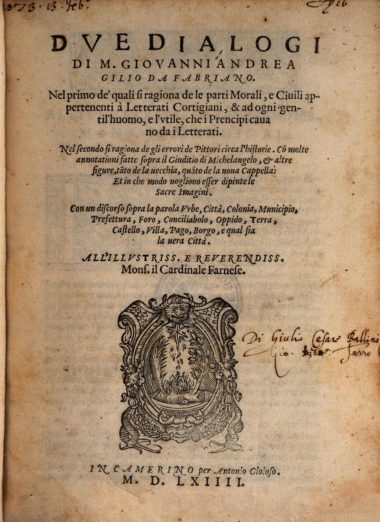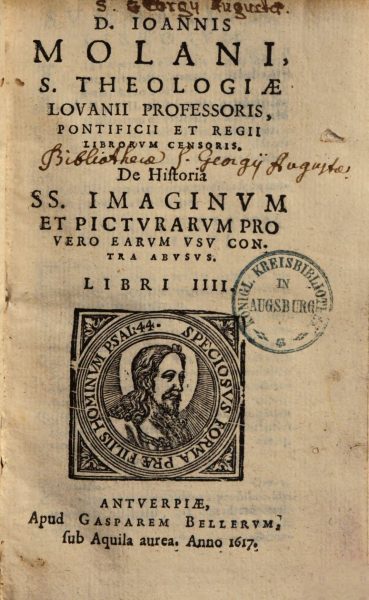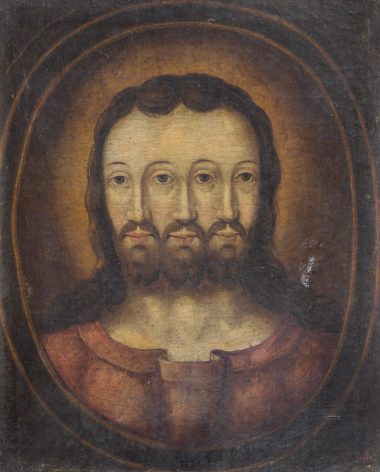Questions on the Holy Trinity
This segment discusses questions on the Holy Trinity based on the case study of Michelangelo’s fresco in the Sistine Chapel, the “Creation of the World”.
Images of the Trinity in the bosom of the Virgin Mary are devoid of beauty and religion
Molanus criticises a particular type of statue of the Virgin Mary that could be opened up and held an image of the Trinity in this inner compartment. According to him, this creates a wrong illusion about the relationship between Virgin Mary and the Trinity.
Images of the Trinity as a man with three heads or with three faces is a diabolical invention
Molanus condemns a rather widespread way of depicting the Holy Trinity, namely their representation as one man with three heads or one head with three faces, which would be a monster of nature and a diabolical invention.
Painting of the Trinity described in the letter of the Suprema to the Inquisition
Letter of the Suprema to the Inquisitiors of the town of Valencia describing some canvases that allegedly entered the kingdom and recommending that they be collected so that they do not continue to circulate.
Painting of the Trinity described in an edict of the Inquisition of Mexico
Edict of the Holy Office of Mexico describing some cavases that allegedly entered the kingdom and recommending that they be collected so that they do not continue to circulate. he Inquisition express the fear that the images convey Lutheran errors







